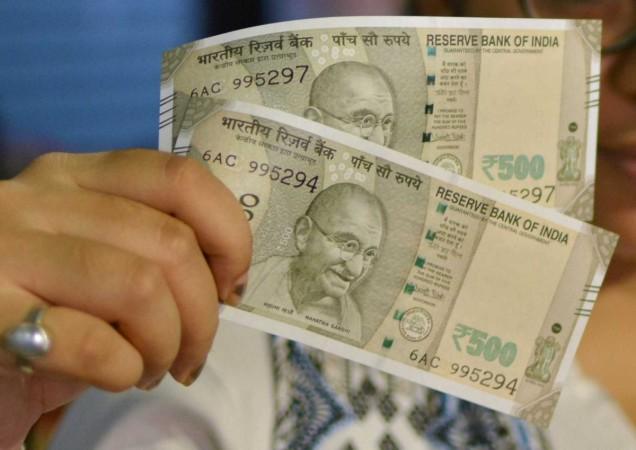
The Indian rupee has been appreciating steadily since the beginning of this year and has zoomed in the past three trading sessions, riding on the bullish sentiments among investors after the BJP's landslide victory in Uttar Pradesh elections. On Thursday, it hit a 17-month high of 65.24 to the US dollar as foreign institutional investors (FIIs/FPIs) continue to pour in money into India equities and debt. On Thursday, the domestic currency closed at 65.41 to the US dollar.
This raises a pertinent question: how far will the rupee strengthen and what are the challenges that could stem its gains? Will the Reserve Bank of India (RBI) intervene? Radika Rao, economist, group research at DBS Bank, analyses these and related aspects in her note.
Investments by FIIs since January
As evident from daily statistics provided by the National Stock Exchange (NSE), FIIs have been net buyers of Indian equities for quite some weeks now in contrast to the selling trend witnessed in the fag end of calendar year (CY) 2016. "Portfolio outflows seen in Nov-Dec16 have reversed out in 2017 yet far. On year-to-date basis, foreign inflows worth $2.8 billion and $700 million into debt have returned," Rao said.

Rupee's bull run
The domestic currency has been gaining steadily since the beginning of this year, mirroring the performance of the BSE Sensex. "The benchmark Sensex index is amongst the best performers in the region on year-to-date basis. After weakening 2.3 percent in 2016, the rupee is up 3.4 percent (vs dollar) on YTD basis," she wrote in her analysis.
If one were to factor in Thursday levels, the gain is even higher, at around 4 percent.
The fact that India's foreign exchange reserves have not risen significantly despite the rupee's hardening is indicative of the fact that the RBI is not intervening to halt the gains. India's foreign exchange reserves stood at $364 billion as of March 3, 2017 and has hovered around $262 billion in the previous four weeks.
Spotlight on RBI
"In midst of these strong gains, focus is on the extent of central bank's tolerance for rupee strength. Under former RBI Governor Rajan there was a bias towards reserves accumulation through absorbing inflows. This helped to limit volatility and kept the currency on a gradually depreciating path in the past two years," Rao wrote.
But RBI Governor Urjit Patel faces a different situation, thanks to demonetisation and the positive sentiments prevailing among investors. While the note ban decision announced last November saw a surge in bank deposits resulting in high liquidity, the dollar inflows into equities and debt has lifted the rupee. These pose challenges to cash-rich RBI's currency management.
"If the central bank intervenes heavily to mop up dollars, it risks aggravating surplus conditions further. The risk is thereby that the central bank might be wary of intervening aggressively to slow rupee ascent, apart from its presence on ad-hoc basis to contain volatility," Rao said.
"We will watch this space closely as fundamental factors like a narrower balance of payments in 3Q16 to 1Q17, global impact from a stronger dollar and trade competitiveness pose headwinds to further rupee gains," she added.
















